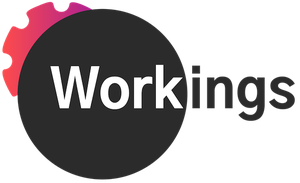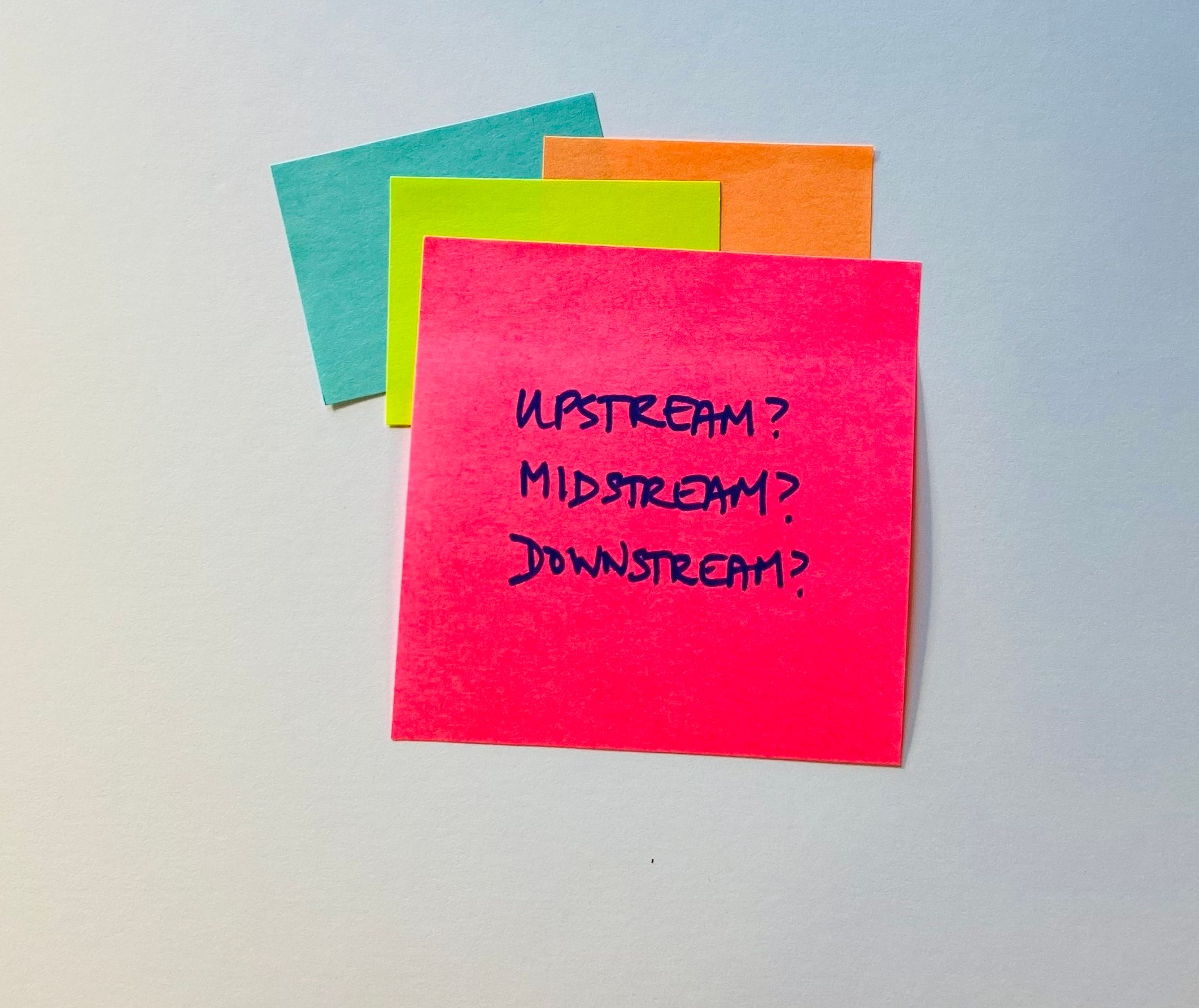Color-coded (of course!), these notes fall into three groups:
1) Ask X about Y. (Later, so you don’t wreck their flow!)
2) Is this a new OP? (Here at Steyer, OPs = operating principles, and we’re always on the lookout for enduring rules to guide us.)
3) Is this—i.e. some emerging, strategy-related idea—actually sound???
Since Workings is all about giving a glimpse behind the scenes—and since the half-baked ideas in group #3 need all the tire-kicking they can get—I thought I’d share one of them before I go, along with some explanatory bullets. Unsurprisingly, it relates to generative AI:
Upstream-Midstream-Downstream
- For now anyway, content professionals should use generative AI tools primarily to support “midstream” work, i.e. brainstorming, background research, some kinds of outlining, and certain kinds of rough drafts.
- “Upstream” work—which includes content strategy and the critical job of creating information pools that are secure, structured, current, and correct—will remain a people-intensive endeavor for the foreseeable future. (Related, dear library scientists, indexers, taxonomists, and information architects: this is your time, and we want to connect with you. If you feel moved to do so, please introduce yourself to our head recruiter Genevieve Jacobsen, and she’ll schedule an informational interview.)
- Similarly, I believe that “downstream” work—all the blood, sweat, and, tears that go into making a given piece of content just so—will also remain a primarily human endeavor for the time being (at least until AGI becomes a reality). Downstream work includes fact-checking, thinking through ethical concerns, making sure that voice and tone are on point, ruthlessly excising clichés, securing stakeholder approvals/buy-in, etc.
What do you think? I’m hoping to return to an inbox jam-packed with thoughtful feedback, so please tell me (email: kwalton@steyer.net) what you make of this whole upstream-midstream-downstream proposition. I’ll reply to each message I receive as soon I emerge from the cornfields.
In the meantime, please wish me luck and thank you as always for reading,
Kate
P.S. No, our embrace of various generative AI tools here at Steyer does not mean that we’ve stopped worrying about all the concerns we talked through at our May 17th STC event (email me or Katelyn if you want to see those concerns listed on one handy slide). But uninformed worry is just noise. To be truly useful—not just to our clients and our consultants but as citizens weighing various ethical issues and advocating for wise regulation—we’ve needed to dive in headlong and learn as much as we can, as fast as we can. As one small part of that effort, we continue to host an open AI chat every Tuesday morning from 8 am to 8:45 am PT. Our COO Katelyn Reilly will be hosting the next one, so if you’d like to join, please email her (kreilly@steyer.net) for the link. We can’t tell you much about what to expect—we’ve had as many as twenty attendees and as few as four, and we cover a lot of ground—but if you have a tolerance for surprises and lightly facilitated chaos, please: grab your coffee, pull up a chair, and join us!
Photo credit: Steyer Content


 Hello from Steyer!
Hello from Steyer!